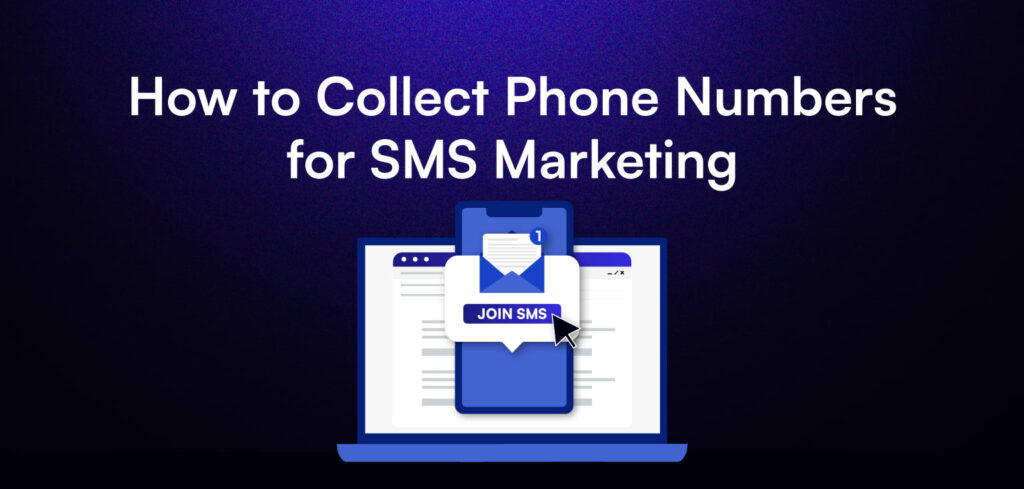While email has long been the darling of digital marketers and brands alike, SMS is quickly proving itself to be a worthy contender in the race for customer attention.
But here’s the catch: to maximize its potential benefits, you must know how to collect phone numbers for SMS marketing. And not just any numbers – you need a list of engaged, interested customers who actually want to hear from you.
Collecting these numbers isn’t as simple as copying them from a phonebook (not that you’d want to anyway). So in this blog, we’ll discuss the best ways to get those digits while making sure we don’t step outside the bounds of what’s legal.
So if your question is how to collect numbers for SMS marketing, read ahead!
SMS Marketing: Legal Considerations
Before we jump into collection strategies, let’s talk about the elephant in the room: legal compliance.
SMS marketing is powerful, but it’s also heavily regulated. Ignoring these rules isn’t just bad form – it can land you in hot water with hefty fines and a damaged reputation.
In the US, the Telephone Consumer Protection Act (TCPA) is your north star. It mandates that you need prior expressed written consent before sending marketing texts. In other words, no pre-checked boxes or sneaky fine print. Your potential subscribers need to know exactly what they’re signing up for.
For our friends across the pond in Europe, the General Data Protection Regulation (GDPR) is the ruling law. Consent is king under GDPR, and you need to be crystal clear about how you’ll use people’s data. Plus, you’ve got to give users control over their information – which includes their right to access, erase, or modify their data.
And lastly, the CAN-SPAM Act. While it’s primarily focused on email, it has some important implications for SMS marketing too. The big takeaway? Always identify yourself in messages and make it easy for people to opt out.
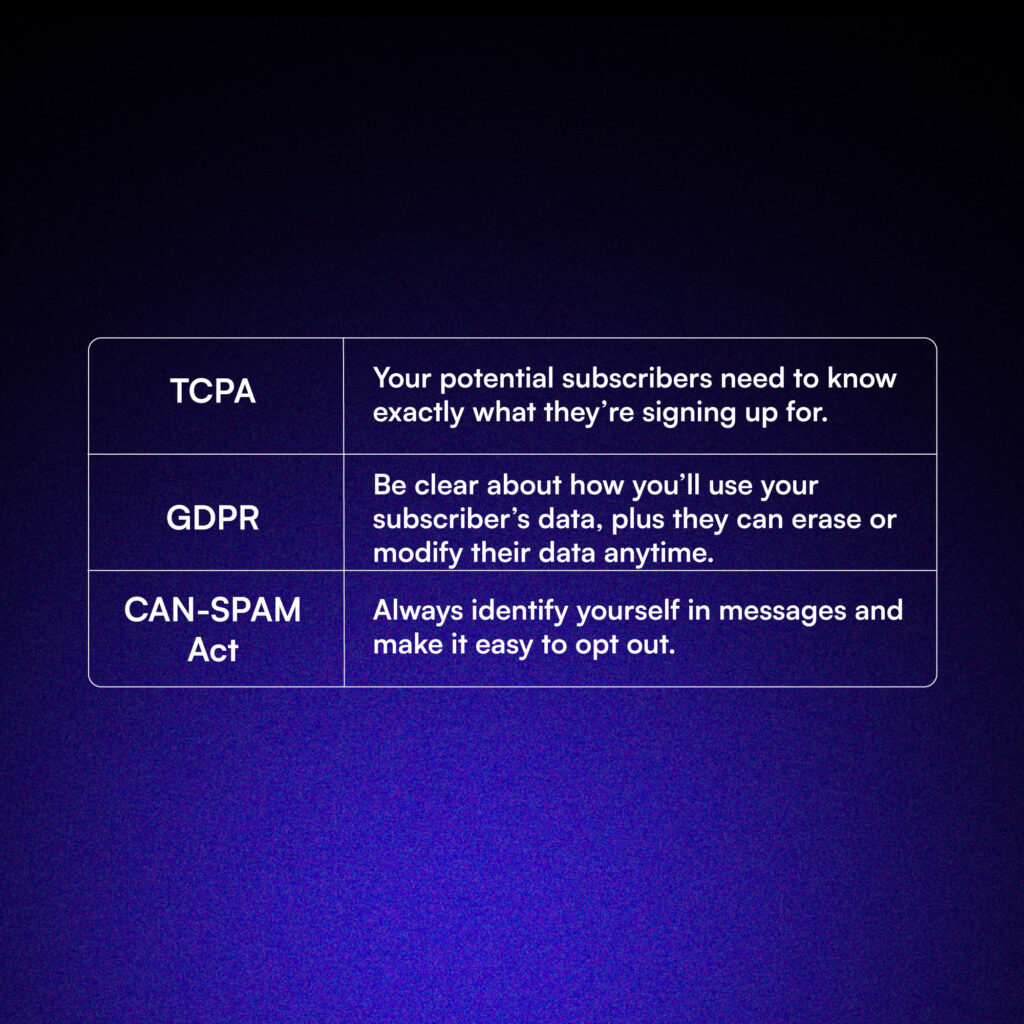
If you’re operating globally, remember that SMS regulations can vary wildly by region. What’s okay in one country might be a major no-no in another. Always do your homework before expanding your SMS marketing to new territories.
Why Buying Phone Numbers is a Recipe for Disaster
Now that we’ve covered the legal basics, let’s address a temptation that many marketers face: buying phone number lists.
It’s an alluring prospect – a ready-made database of thousands of potential customers. But trust us, it leads to nothing but trouble.
First off, those purchased numbers? They’re about as interested in your product as a cat is in taking a bath. You’ll be wasting time and resources sending messages to people who have zero connection to your brand. Expect dismal conversion rates and a whole lot of frustration.
Remember, the currency for conversion is connection. With purchased phone numbers, there is no connection—so expect zero conversion.
But ineffectiveness is just the tip of the iceberg. Many of those numbers are likely unsubscribed or on do-not-contact lists. Sending messages to them is a fast track to getting your messages blocked or your account suspended.
Not to mention that sending unsolicited texts is a great way to rack up hefty fines and destroy your brand’s reputation faster than you can say “unsubscribe.”
So say it with us: No bought lists. Ever.
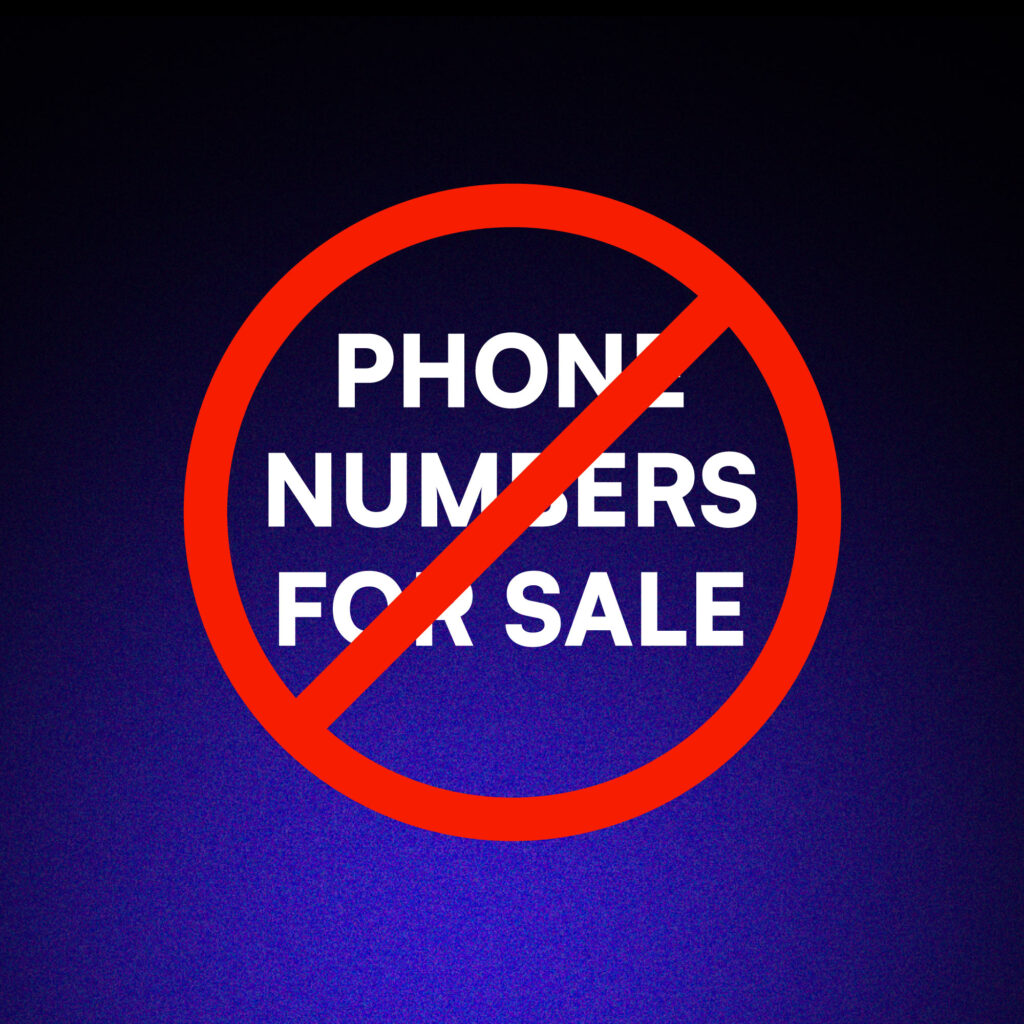
How to Collect Phone Numbers for SMS Marketing (The Right Way)
Now that we’ve covered what not to do, let’s dive into the good stuff – ethical, effective ways to build your SMS marketing list.
Website Sign-up Forms
Your website should be your primary source for SMS list building. Make it easy for visitors to join by strategically placing sign-up forms throughout your site.
Always, always offer a clear value proposition. Your customers value their phone numbers so, you should always have a great answer to their What’s in it for me?
Exclusive deals? Early access to sales? Special freebies? You decide. But make it irresistible.
Here are three ways to collect phone numbers using Sign-up Forms on your website:
SMS Opt-in
Smart Opt-In is revolutionizing the way we collect phone numbers. Here’s how it works:
When a visitor enters their phone number on your site, they immediately receive a one-time passcode. The form then prompts for this code, which conveniently auto-fills on most mobile browsers. It’s an efficient double opt-in process that keeps users engaged.
Smart Opt-In is great because of its ability to keep potential subscribers on your site throughout the process. This reduces distractions and dropoffs, leading to higher conversion rates.
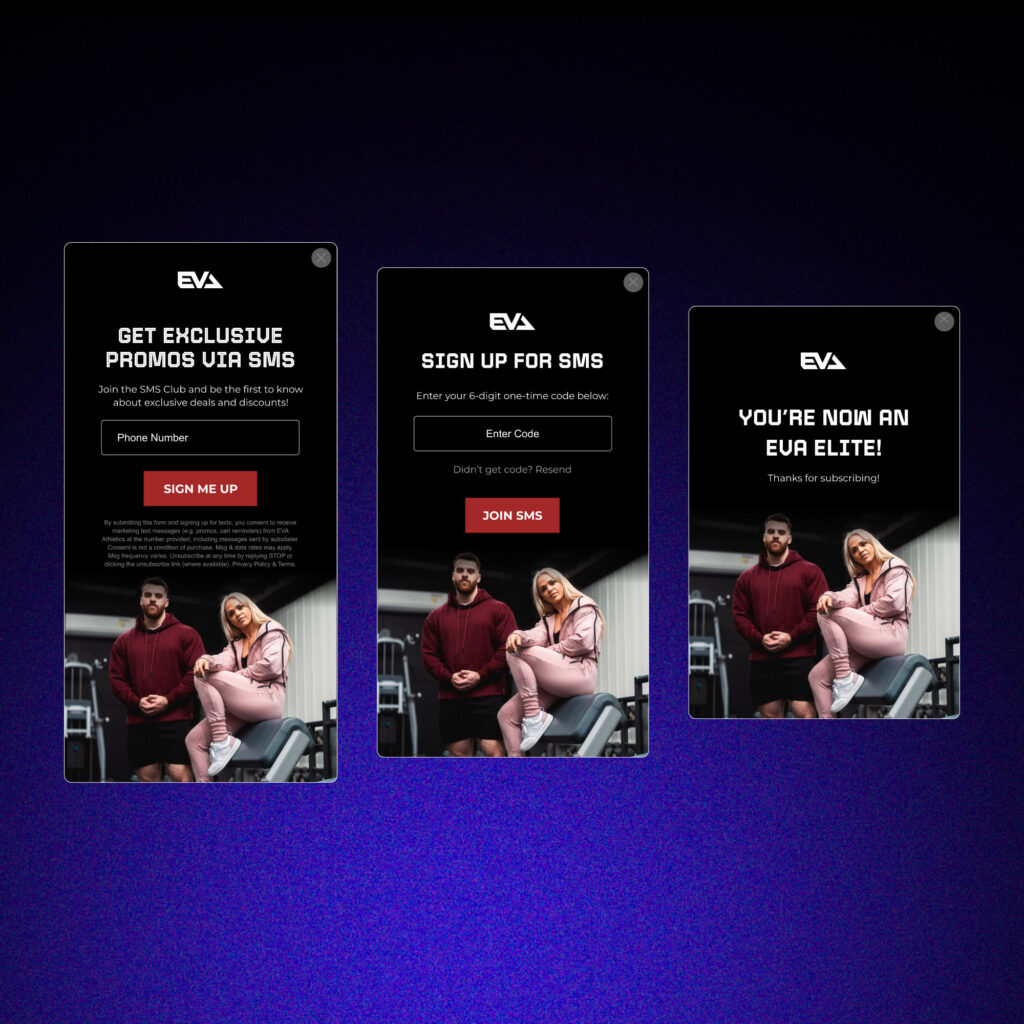
Moreover, it’s versatile – functioning across desktop and mobile platforms – and compliant, thanks to its two-step verification process. This makes it particularly valuable for features like abandoned cart reminders.
Tap-to-Text
Tap-to-Text caters specifically to the mobile user experience. On desktop, users input their number manually. On mobile devices, however, it’s a different story.
Users simply tap a button, which opens their messaging app with a pre-populated message. They then send this message, and depending on your settings, they’re either instantly subscribed or prompted to confirm their subscription.
This method’s strength lies in its simplicity and error reduction. The two-step process also ensures a clean, compliant subscriber list.
Phone Number Input
The traditional phone number input field remains a reliable option in SMS marketing. It’s tried, tested, and true.
It’s also straightforward: visitors see a field, enter their number, and submit. This method’s simplicity is its strength.
Why consider it? It’s easy to implement, universally compatible, and familiar to users. Sometimes, the conventional approach can be the most effective.
Ultimately, whether you opt for the innovative Smart Opt-In, the mobile-friendly Tap-to-Text, or the classic input field, your goal remains the same: growing your SMS subscriber list effectively and compliantly. Choose the method that best aligns with your audience and your list will naturally grow.
In-Store Sign-ups
In our digital-obsessed world, it’s easy to forget about good old-fashioned face-to-face interactions. If you have a physical store, use it to your advantage.
Train your staff to ask for phone numbers at checkout, but make sure they can clearly explain the benefits of signing up. Consider using tablets or kiosks for easy digital sign-ups. And if you have a loyalty program, integrating SMS opt-in is a no-brainer.
Text-to-Join Campaigns
Your SMS keyword should be everywhere your brand is. Include it on print ads, social media posts, product packaging – anywhere your target audience might see it. Make it visually appealing and impossible to miss. The goal is to make signing up for your SMS list feel like the most natural thing in the world.
Run Contests and Giveaways
Want to supercharge your list growth? Run a contest or giveaway campaign with SMS entry. Make texting your keyword an entry requirement, but be crystal clear that entry includes opting into marketing messages.
Then, follow up with valuable content to keep those new subscribers engaged. After all, a large list means nothing if people aren’t opening your messages.
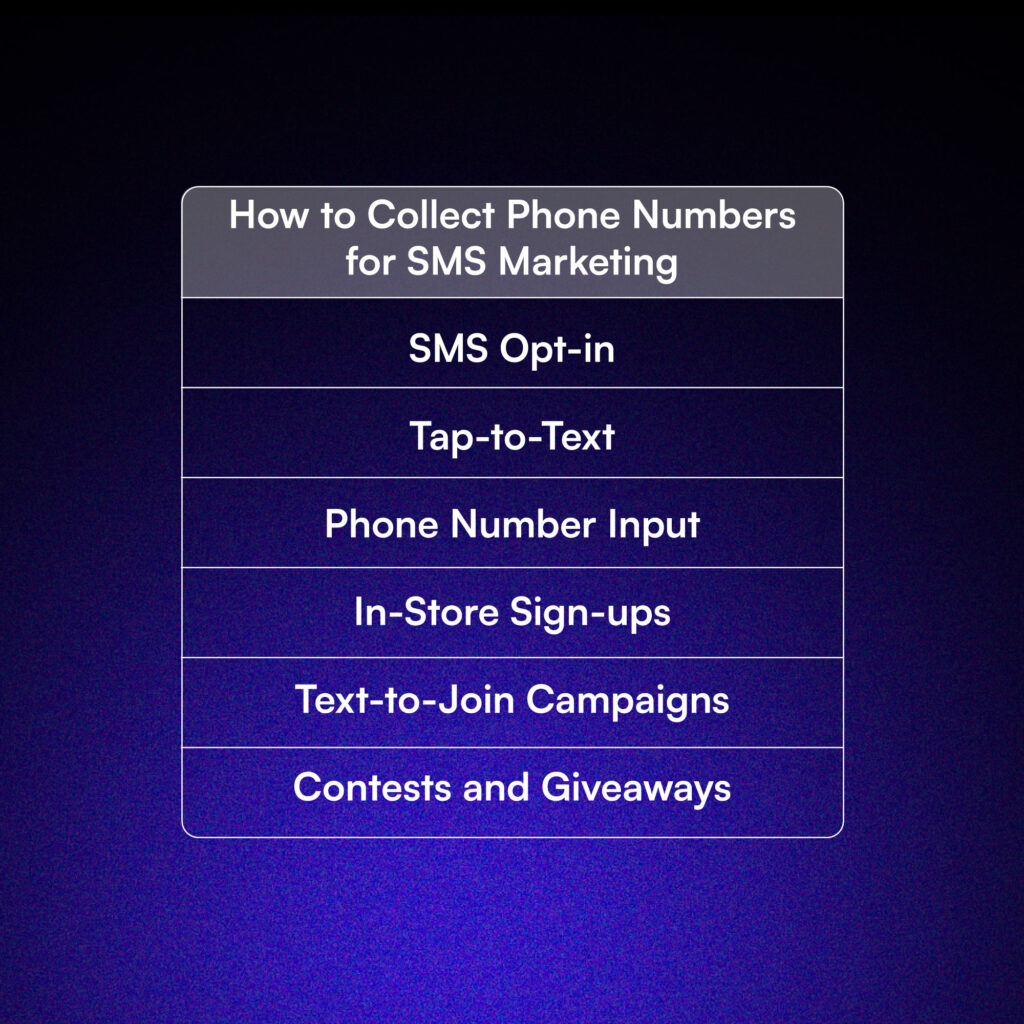
The Bottom Line
Building a strong SMS marketing list takes time and effort, but the results are worth it. By following these strategies and always prioritizing consent and value, you’ll create an engaged audience that’s eager to hear from you.
Remember, SMS marketing is all about building relationships. Every message you send should provide value to your subscribers. Test, refine, and never stop looking for ways to improve your approach.
Read this next: Ultimate Guide to Klaviyo SMS Pricing: Market Confidently in 160 Characters or Less!

